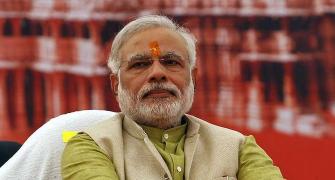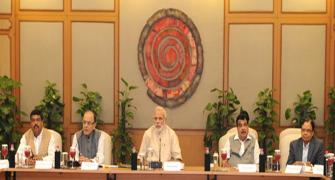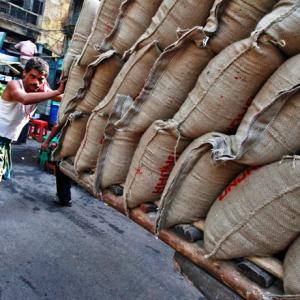Although low commodity prices pose a challenge, there are positives for India and it is time to capitalise on them
 India’s gross domestic product would grow between 7.5 and eight per cent in 2015-16, Economic Affairs Secretary Shaktikanta Das said on Monday.
India’s gross domestic product would grow between 7.5 and eight per cent in 2015-16, Economic Affairs Secretary Shaktikanta Das said on Monday.
This is a step down from the 8.1-8.5 per cent growth forecast in the last Economic Survey.
“We are quite confident that upwards of 7.5 per cent is what we can reasonably expect,” Das said at an event in New Delhi.
The senior policymaker said India is considered one of the few bright spots in a global economic situation wracked by low commodity prices, turmoil due to concerns over China’s slowdown and the uncertainty surrounding the US Federal Reserve’s announcements on September 17.
“But that’s no cause for complacency and the government is committed to taking necessary measures to retain that position for India,” he said, adding that India will account for 18 per cent of the global growth.
"The Indian economy expanded by seven per cent in the first quarter (April-June) of the current financial year.
In the last financial year, GDP growth was 7.3 per cent.
Goldman Sachs echoes
Global brokerage firm Goldman Sachs on Monday forecast India’s gross domestic product would grow 7.5 per cent this financial year, the lower range of the finance ministry’s revised projection of 7.5-8 per cent.
Das added the government and the Reserve Bank of India (RBI) are prepared to deal with any eventuality arising out of the US Federal Reserve’s action on interest rates later this week, the finance ministry said on Monday.
“The US policy stance has been expected for the past two years or so. And we are aware this has to come at some time. It is not something which is suddenly confronting us,” Das said.
He said the US has been deferring the interest rate hike decision due to employment figures in that country, but “today there is emerging view that job numbers in the US look better”.
Das added the US administration would do it in a “calibrated and cautious” manner so that it doesn’t affect other economies adversely.
An increase in interest rates by the US might result in flight of capital from emerging markets, including India.
Das said the US-Iran deal, the shale gas revolution, the expected innovation in solar energy and developments around fighting the menace of black money and terror funding would act as “silver linings” for the global economy.
“There are silver linings and while we recognise that the world economy today has become volatile, which many people say has become the new normal, there are also opportunities; there are also silver linings,” said Das.
“While volatility and uncertainty are new normals, India is uniquely placed to be the bright spot and the government is taking necessary policy measures. It is India’s chance to grow and the government will see this opportunity is not stifled.”
Das said there were concerns around the agriculture sector, but there were also signs of a pick-up in rural demand.
Besides, increased infrastructure spending and more foreign direct investment coming in with global majors such as GE and Foxconn investing in India makes a case for better manufacturing output.
“Emphasis on manufacturing strengthens our expectation that growth numbers will be maintained. Index of industrial production figures show improvement in capital goods and manufacturing.
"We are quite confident that growth rate will be 7.5 per cent plus,” said Das, adding FDI in April-June jumped 40 per cent to Rs 60,300 crore (Rs 603 billion).
He said the RBI and the government are monitoring the current account deficit position and will take steps to keep it at manageable levels.
The CAD, which is the difference between the inflow and outflow of foreign currency, narrowed to 1.2 per cent of GDP in the April-June quarter, from 1.6 per cent in the same period in the last financial year.
Das said fiscal deficit would be within the budgeted level of 3.9 per cent and revenues are buoyant.
“There are some concerns with regard to corporate profits having come down and affecting the corporate results and, therefore, the direct tax collections. But indirect tax collections have been very buoyant and I’m sure the overall budgeted tax numbers will be achieved,” he said.
Although low commodity prices pose a challenge, there are positives for India and it is time to capitalise on them.
A decline in crude prices has helped lower inflation as well as subsidy expenditure.
The steel sector is facing problems because of a surge in imports, but downstream industries such as automobile, machine goods makers and power equipment manufacturers are getting it at a cheaper price, Das said.
“Overall, it also has a sobering effect on input cost and to that extent these sectors of our economy are likely to become more competitive globally.
Cement is also another area where falling prices should be helpful to the construction sector,” he added.
On the twin schemes approved by the Cabinet last week to bring down gold import, Das said the gold monetisation scheme would help in conversion of idle gold to cash.
The gold bond scheme would wean away investors from physical gold, he said, adding that whatever additional borrowing is done through it would be within the fiscal deficit target.










